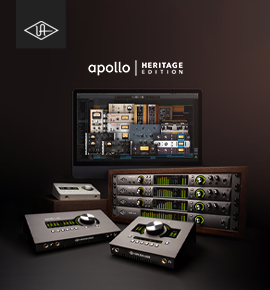How To Know The Woodburning Stove That's Right For You
페이지 정보
작성자
Adrienne Bedard
작성일
본문
Wood stoves can provide an inexpensive and cozy way to heat your home. However, the smoke they release can be harmful to your health. It is important to know how these appliances work and how to use them properly.
A lot of modern stoves rely on a catalytic or secondary combustion to reduce their emissions. But older stoves and open fires generate large amounts of particulates.
The firebox
The firebox is the heart of any fireplace system. It's where you create a fire to heat your home and provide ambiance. It's a simple concept, but there are many important details that must be accounted for to keep your wood burning stove safe and efficient.
The most straightforward way to think of the firebox is that it's a box-like combustion chamber with walls and doors. The majority of fireplaces have a prefabricated metal firebox or a masonry firebox. The type of box you choose will depend on your personal preferences and the kind of fireplace you have.
The majority of wood-burning stoves employ a constant flow of air to produce the fire and burn the fuel. Fresh air is pumped into the stove through dampers that can be adjusted within the doors. This lets the fuels burn correctly, and also reduces the toxic gases produced by burning that is not complete or properly burned. The exhaust gases are then taken up by the chimney, and safely out of your home.
Modern stoves that have catalytic secondary combustion employ a special catalyst that allows the unburned gasses to generate additional heat. This creates a cleaner and less polluting smoke than traditional wood stoves that do not have secondary combustion. Modern non-catalytic stoves are also available, but they're usually less efficient than stoves that have catalytic secondary combustion.
Some wood-burning fireplaces come with a backboiler, which can be used for space heating and water heating. These stoves are known as "hybrids" or "combination". They are in use since the beginning of the 20th century.
Wood burning stoves should only be lit with well-seasoned wood. Freshly cut (green) wood has a high moisture content and can result in low flue temperatures and a lot of creosote buildup in the chimney. This can cause chimney fires that destroy the stove, and can even be dangerous to your family's health.
If you're in search of an expert to look over your wood burning stove or to make any repairs to your firebox ensure that the chimney specialist you choose is CSIA certified and has customer testimonials on their website. It's also important to ask about their rates and what type of work they do.
The ventilation pipe
Ventilation is a must for wood stoves in order to eliminate fumes and keep the home healthy and warm. Venting carries away carbon monoxide, nitrogen dioxide and excess moisture from the combustion process. It also reduces air pollution and loss of heat to the outdoors. Gas, wood and pellet stoves have different requirements for venting. It is essential to maintain the stove's venting systems on an every year to ensure safety and efficiency.
The ventilation system is comprised of the firebox, the vent pipe and the chimney. The chimney and ventilation pipe work together to create a draft that draws smoke from the stove out through the fireplace. Draft is generated through the difference in temperature and density between hot wood smoke and cold air outside. The more hot the smoke, the more it is able to rise up the chimney and vent pipe.
Modern wood stoves are certified by the EPA as low-emission units. They produce less pollution than older models that contribute to global heating and other environmental concerns. Modern stoves are equipped with pollution control systems that limit the amount of carbon dioxide released while ensuring that they are burned efficiently.
Older stoves with open flues produce more carbon dioxide. It is a poisonous gas that is toxic and cannot be escaped into your home. Carbon monoxide can be produced when the chimney is dirty or there is inadequate ventilation. Installing carbon monoxide alarms inside your home is therefore crucial.
Find the distance between the chimney's opening in the wall or ceiling and the spot where the wood stove is on the floor. Multiplying this distance by 2 will give you the shortest length of stovepipe you need. You can choose a single-wall or a double-wall stovepipe, but you must allow for the adequate clearance from the combustibles.
When the stove is lit for the first time and the flame is first lit, adjust the vent until a proper flame has been established and combustion is stable. It is advised to avoid using wood based logs in the stove since they could contain volatile chemicals that could cause the air vents to fail.
The chimney
The chimney is a complex system that requires careful care. The chimney is made up of numerous important parts which are all essential for the safe and efficient operation of your stove.
The wood burning stove's combustion gases are emitted outwards through the firebox, the vent pipe, and the chimney. This is essential in preventing harmful emissions and also reducing carbon dioxide levels in your home. To accomplish this, the flue and chimney must be hot enough to remove the gases from the fireplace without cooling. This is accomplished by using a woodburning stove with a high heat output and by adding regularly new logs to the fire.
Most modern woodburning stoves are built to work with a chimney that's taller than older models to create a more drafting effect. However, this can have disadvantages if the size of your chimney is greater than the maximum allowed for your area. If this occurs the chimney could compete with the house stack for draft, which can cause the gases to cool before they exit. This can impede the flow of gases and lead to creosote accumulation, which poses a potential fire risk.
The most common error homeowners make is to open the fireplace door and close it frequently. This can adversely affect the combustion. It is crucial to keep the fireplace door as tightly shut as you can, and only open it to add ash or firewood. The door that is left open for too long permits hot air to escape from the stove, causing the logs to cool and harder to light. It releases volatile compounds that are not burned into the room.
Another mistake that many make is to use other types of combustibles in their woodburning stoves, which could cause more emissions or even a chimney fire. The fact is that woodburning stoves are designed and designed to burn firewood and not other kinds of combustibles.
The flu
To ensure proper air flow, woodburning stoves require an exhaust pipe that is the right size. Typically, the dimensions of the flue should be at 25 percent larger than the stove pipe (which connects the stove to the chimney) to provide enough space for smoke passage. Additionally, a wood stove must be placed on a hearth constructed of non-combustible materials and wood burning stove is clear and unobstructed area in the front of the opening for the fireplace.
Modern stoves feature an element called catalytic combustor, which can cut down on the amount of harmful byproducts that are released into the chimney. This feature can also assist to improve the efficiency of wood stoves by burning a fire that produces more heat and less polluting. However, using other kinds of combustibles, like coal, can cause issues, such as lower efficiency and more emissions.
When burning wood in a stove or fireplace it is crucial to use dried or seasoned wood. If your wood is not dry or seasoned, it will emit high levels of water vapor and creosote into the chimney. This can result in low flue temperatures, and even a fire in the chimney.
A professional can also assist you in avoiding a fire in your chimney by regularly checking and cleaning the flue system. This includes the stovepipe, chimney and the chimney itself.
A soiled stove or flue system may lead to a poor draft in your chimney, which could cause carbon monoxide build-up in your home. This could be hazardous to your family and you should not allow it to happen.
 A good rule is to ensure that your stove and chimney are cleaned by a professional once a year. This will help keep your chimney and stove working efficiently.
A good rule is to ensure that your stove and chimney are cleaned by a professional once a year. This will help keep your chimney and stove working efficiently. 관련자료
-
이전
-
다음
등록된 댓글이 없습니다.




